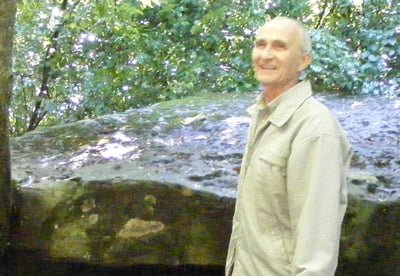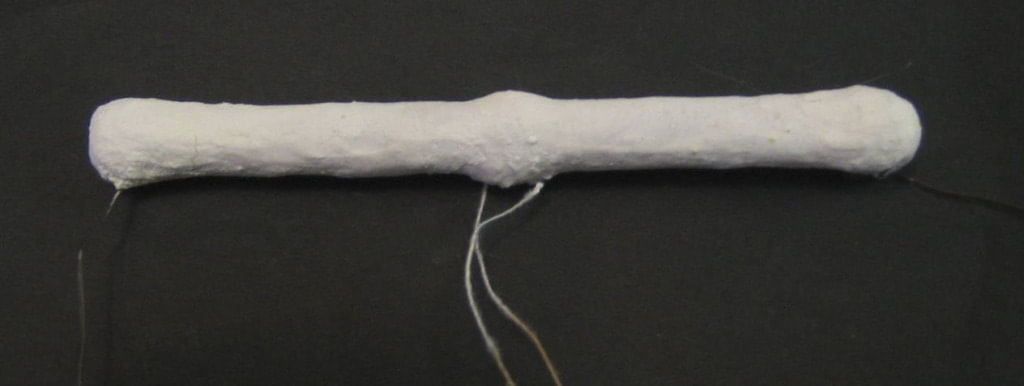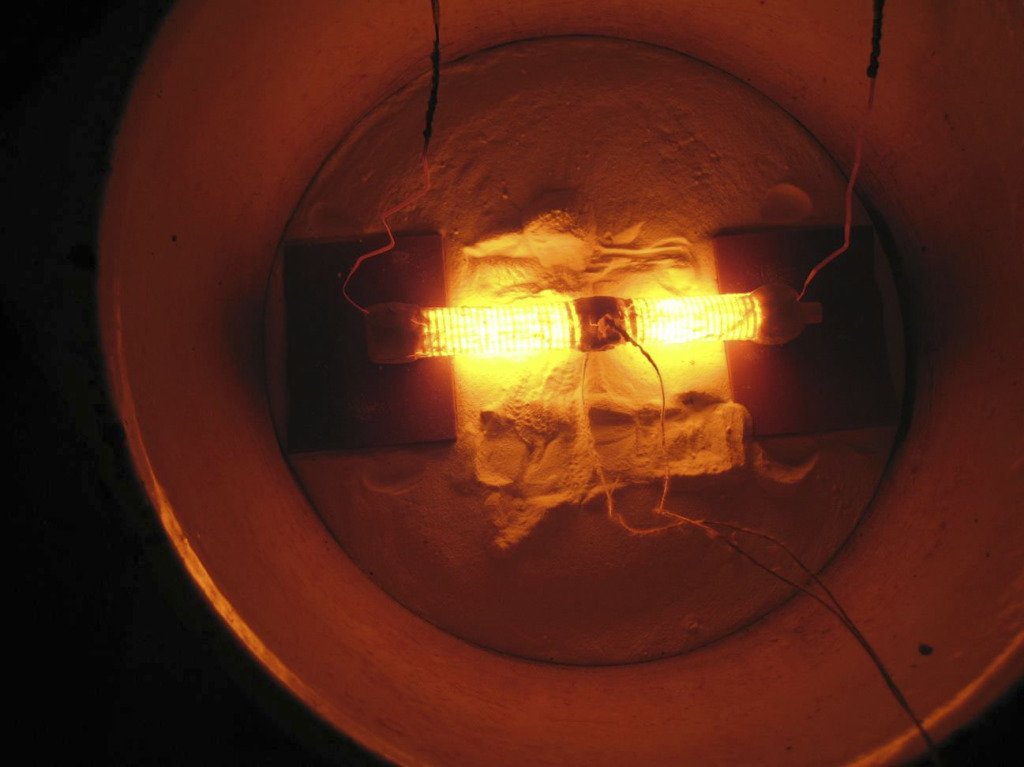A New Kind of Nuclear Reactor? by Guest Author Dr. Ludwik Kowalski, Montclair State University, in which Dr. Kowalski dives into the Parhomov experiment and makes sense of the particulars for the general reader.
Read the original article posted here on Dr. Kowalski’s cold fusion archive.
Abstract
Consider a short sealed porcelain tube, containing about one gram of white powdered LiAlH4 fuel mixed with ten grams of powdered nickel. Professor Alexander G. Parkhomov, who designed and tested it, calls this small device a nuclear reactor, in a published report. The purpose of this short article is to briefly summarize Parkhomov’s discovery, in as simple a way as possible, and to make some general comments. Such setup, even if scaled up, would not be useful in an industrial electric power generating plant, due to well-known conversion efficiency limit. The expected readers are scientists and educated laymen.
Section 1 Introduction
Consider a sealed porcelain tube 20 cm long, containing about one gram of white powdered fuel mixed with ten grams of powered nickel. Professor Alexander G. Parkhomov, who designed and tested it, calls this small device a nuclear reactor, in a published report (1). The purpose of this short article is to briefly summarize Parkhomov’s discovery, in as simple a way as possible, and to make some general comments. The expected readers are scientists and educated laymen. Hopefully, this article will prepare them to understand Parkhomov’s report, and similar technical publications on the same topic.
The author, a retired nuclear physicist educated in the USSR, Poland, France and the USA, has dedicated this article to his father who died in a Gulag camp, and to his famous mentor Frederic Joliot-Curie. Who is Alexander Parkhomov? He is a Russian scientist and engineer, the author of over one hundred publications. The photo shown below was taken in 1990. Electronic equipment on the table is probably not very different from what he used to measure thermal energy released in the reactor.

Parkhomov in his lab
Section 2 Describing the Reactor
The title of Parkhomov’s recent report is “A Study of an Analog of Rossi’s High Temperature Generator.” Is the word “reactor,” in the title of this section, appropriate? Yes, it is. A totally unexplained reaction, releasing an extraordinary amount of heat, must be responsible for what is described in Sections 3. Is this reaction nuclear? Parkhomov certainly thinks so; otherwise he would not use instruments designed to detect nuclear radiations. His powdered fuel was 90% natural Ni; the rest was a LiAlH4 compound.
The controversial field of science and technology (2,3), in which Rossi (4) and Parkhomov are active, is Cold Fusion CF), also known under different names, such as CMNS, LENR, etc. Reference to Andrea Rossi in the title of the report is puzzling. Yes, Rossi also thought that thermal energy released in his device was nuclear, rather than chemical. But that is where the similarities end; the two reactors differ in many ways. For example, Rossi’s fuel was hydrogen gas, delivered from an outside bottle.
The illustration below is a simplified diagram of Parkhomov’s setup. The diagram does not show that the porcelain tube (red in the diagram) was closely wrapped by a heating wire. The electric energy delivered to the heater, in each experiment, was measured using several instruments; one of them was a standard kWh meter, similar to those used by electric companies. Heating of the fuel was necessary to keep the fuel temperature very high; the required temperature had to be between 1000 C and 1400 C.

Simplified diagram of Parkhomov’s setup
The reactor container (a covered box) was immersed in an aquarium-like vessel, filled with boiling and steaming water. To keep the water level constant during the experiment, a small amount of hot water (probably 90 grams) was added through a funnel, every three minutes or so. The mass of the escaped steam, turned into liquid water, was measured outside of the setup. Knowing the mass of the steam that escaped during an experiment one can calculate the amount of thermal energy escaping from the aquarium. Parkhomov’s method of measuring excess heat was not very different from that used by the leader of Russian Cold Fusion researchers, Yuri Nikolaevich Bazhutov (5).
Section 3 A Surprising Energy Result
Here is a description of results from one of three experiments performed by Parkhomov in December 2014. The porcelain tube with the powdered fuel was electrically heated at the rate of 500W. Then the state of thermal equilibrium was reached. The water in the aquarium remained in that state for nearly one hour. The constant fuel temperature, measured with a thermocouple (also not shown in the diagram) was 1290 C. The time interval of 40 minutes was selected for analysis of experimental results. The amount of water evaporated during that interval was 1.2 kg. The amount of electric energy the heater delivered to water in the aquarium, during that time, was 1195 kJ. Most of that energy was used to evaporate water. But 372 kJ of heat escaped from water via conduction. That number was determined on the basis of results from preliminary control experiments
Let XH be the amount of heat the aquarium water received from the reactor that is from the porcelain tube containing the fuel.
Thus the net “input” energy was
It represents thermal energy received by water, during the experiment.
Knowing the water’s “heat of evaporation” (2260 kJ/kg), one can calculate the thermal energy lost by water to sustain evaporation. It was:
This is the thermal energy lost by water, during the experiment. According to the law of conservation of energy, the INPUT and the OUTPUT must be equal. This leads to:
This is a surprising result. Why surprising? Because it is much larger than what is released when one gram of a familiar fuel is used. Burning one gram of powdered coal, for example, releases about 30 kJ of thermal energy, not 1889 kJ. What is the significance of this? The superficial answer is that “Parkhomov’s fuel is highly unusual, and potentially useful.”
Section 4 Cold Fusion Contoversy
Parkhomov’s box is not the first device that was introduced as a multiplier in which electric energy is turned into heat, and where outputted thermal energy exceeds the electric energy supplied. A conceptually similar device, based on electrolysis, was introduced in 1989, by Fleischmann and Pons (F&P). Their small electrolytic cell also generated more thermal energy than the electric energy supplied to it. Trying to establish priority, under pressure from University of Utah administration, the scientists announced their results at a sensational press conference (March 23, 1989). They wanted to study the CF phenomenon for another year or so but were forced to prematurely announce the discovery (private information)
The unfortunate term “cold fusion” was imposed on them. Why unfortunate? Because it created the unjustified impression that cold fusion is similar to the well known hot fusion, except that it takes place at much lower temperatures. This conflicted with what had already been known–the probability of nuclear fusion of two heavy hydrogen ions is negligible, except at stellar temperatures (6,7).
Suppose the discovery had not been named cold fusion; suppose it had been named “anomalous electrolysis.” Such a report would not have led to a sensational press conference; it would have been made in the form of an ordinary peer review publication. Only electrochemists would have been aware of the claim; they would have tried to either confirm or refute it. The issue of “how to explain the heat” would have been addressed later, if the reported phenomenon were recognized as reproducible-on-demand. But that is not what happened. Instead of focusing on experimental data (in the area in which F&P were recognized authorities) most critics focused on the disagreements with the suggested theory. Interpretational mistakes were quickly recognized and this contributed to the skepticism toward the experimental data.
5) Engineering Considerations
The prototype of an industrial nuclear reactor was built in 1942 by Enrico Fermi. It had to be improved and developed in order to “teach us” how to design much larger useful devices. The same would be expected to happen to the tiny Parkhomov’s device.
a) One task would be to develop reactors able to operate reliably for at least 40 months, instead of only 40 minutes. This would call for developing new heat-resisting materials. Another task would be to replace the presently used (LiAlH4 + Ni) powder by a fuel in which energy multiplication would take place at temperatures significantly lower than today’s minimum, which is close to 1000 C .
b) The third task would be to scale up the setup, for example, by placing one hundred tubes, instead of only one, into a larger aquarium-like container. This would indeed increase the amount of released thermal energy by two orders of magnitude. Scaling up, however, would not increase the multiplication factor. The only conceivable way to increase the MF would be to find a more effective fuel.
c) A typical nuclear power plant is a setup in which a nuclear energy multiplier (a uranium-based reactor) feeds thermal energy into a traditional heat-into-electricity convertor. Such multipliers are workhorses of modern industry. Note that MF of an industrial nuclear reactor must be larger than three; otherwise it would not be economically justifiable. This is a well-known fact, related to the limited efficiency of heat engines.
d) Uranium and thorium seem to be the only suitable fuels, in any kind of energy multiplier. Why is it so? Because fission is the only known process in which more than 100 MeV of nuclear energy is released, per event. This number is about four times higher than what is released when two deuterons fuse, producing helium. Will more efficient fuels be found? If not then chances for replacing coal, oil, and gas by a Parkhomov-like fuels are minimal.
6) Scientific Considerations
Science is at the base of all modern engineering applications. But the main preoccupation of most scientists is to understand laws of nature, not to build practically useful gadgets. Confirmation of claims made by Parkhomov is likely to trigger an avalanche of scientific investigations, both theoretical and experimental, even if the energy multiplication factor remains low.
a) Suppose that Parkhomov’s energy multiplier, described in this article, is already recognized as reproducible on demand, at relatively low cost. Suppose that the “what’s next?” question is asked again, after two or three years of organized investigations. Scientists would want to successfully identify a “mystery process” taking place in the white powder, inside the porcelain tube. Is it chemical, magnetic, pyrometallurgic, biological, nuclear, or something else? Answering such questions, they would say, is our primary obligation, both to us and to society.
b) Parkhomov certainly believes that a nuclear process is responsible for XH, in his multiplier. Otherwise he would not use instruments designed to monitor neutrons and gamma rays. But, unlike Fleischmann and Pons, he does not speculate on what nuclear reaction it might be. He is certainly aware of tragic consequences of premature speculations of that kind.
7) Social Considerations
The social aspect of Cold Fusion was also debated on an Internet forum for CMNR researchers. Referring to the ongoing CF controversy, X1 wrote: “The long-lasting CF episode is a social situation in which the self-correcting process of scientific development did not work in the expected way. To what extent was this due to extreme difficulties in making progress in the new area, rather than to negative effects of competition, greed, jealousy, and other ‘human nature’ factors? “A future historian of science may well ask “how is it that the controversy ignited in 1989 remained unresolved for so many decades? –who was mainly responsible for this scientific tragedy of the century, scientists or political leaders of scientific establishment, and govrnment agenies, such as NSF and DOE? Discrimination against CF was not based on highly reproducible eperimental data; it was based on the fact that no acceptbal theory was found to explain unextected experimental facts, reported by CF researchers.
Parkhomov’s experimental results will most likely be examined in many laboratories. Are they reproducible? A clear yes-or-no answer to this question is urgently needed, for the benefit of all. What would be the most effective way to speed up the process of getting the answer, after a very detailed description of the reactor (and measurements performed) is released by Parkhomov? The first step, ideally, would be to encourage qualified scientists to examine that description, and to ask questions. The next step would be to agree on the protocol (step-by-step instructions) for potential replicators. Agencies whose responsibility is to use tax money wisely, such as DOE in the USA, and CERN in Europe, should organize and support replications. Replicators would make their results available to all who are interested, via existing channels of communication, such as journals, conferences, etc. A well-organized approach would probably yield the answer in five years, or sooner.
References
(1) A.K. Parkhomov, “A Study of an Analog of Rossi’s High Temperature Generator” http://csam.montclair.edu~kowalski/cf/parkh1.pdf
(2) L. Kowalski, “Social and Philosophical Aspects of a Scientific Controversy;” IVe Congres de la Societe de Philosophy des Sciences (SPS); 1-3 Juin 2012, Montreal (Canada). Available online at:
http://www.ptep-online.com/index_files/2012/PP-29-L2.PDF
(3) Ludwik Kowalski, http://pages.csam.montclair.edu/~kowalski/cf/413montreal.html
(4) Ludwik Kowalski, ” Andrea Rossi’s Unbelievable Claims.” a blog entry: http://pages.csam.montclair.edu/~kowalski/cf/403memoir.html#chapt24
(5) Peter Gluck interviews Bazhutov:
https://coldfusionnow.org/interview-with-yuri-bazhutov-by-peter-gluck/
(6) John R. Huizenga, “Cold Fusion, The Scientific Fiasco of the Century.”
Oxford University Press, 1993, 2nd ed. (available at amazon.com)
(7) Edmund Storms, “The Explanation of Low Energy Nuclear Reaction,” Infinite Energy Press, 2014. (also available at amazon.com)
Find more on Ludwik Kowalski’s cold fusion archive.
Related Links
Russian scientist replicates Hot Cat test: “produces more energy than it consumes”
Q&A with Jack Cole on new Hot Cat replication, experiment completion
A Russian Experiment: High Temperature, Nickel, Natural Hydrogen by Michael C.H. McKubre

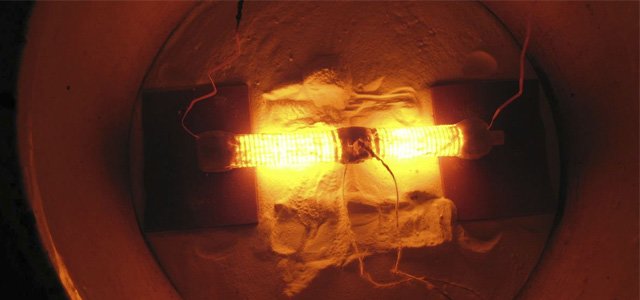






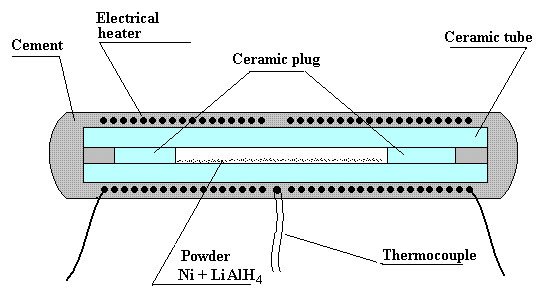





 Photo: Reaction chamber in operation. Note that the true light color was orange. Courtesy Jack Cole.
Photo: Reaction chamber in operation. Note that the true light color was orange. Courtesy Jack Cole.
